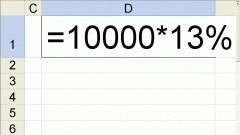Instruction
1
Determine the size of the costs that are required for the purchase or production of traded goods. Do not forget to add to this amount the fixed costs: the costs for rent and fixed utilities, salaries of employees involved in the manufacture and sale of products, advertising, etc.
2
If you know the amount of the cost that goes into producing or selling one unit of goods, you can calculate the sales volume that is required in order to purchase the fixed costs. The calculations do not forget that the market may have its limitations, so not always you will be able to sell that quantity of products, which was conceived at a certain level of allowances.
3
Different product groups may have different levels of overhead. So, high-quality, exclusive, rare customers purchase the product typically has a larger markup. Allowance for food, commodities should not be high.
4
When setting prices, you must focus on your competitors. To sell more, make the premium lower. But don't get too carried away, after all, consumer psychology can play a cruel joke with you as they will stop buying your products, associating low price with low quality.
5
The size of discounts for regular customers and the cost of carrying out various promotions and draws, it is also desirable to include in allowance for the goods.Also should do the tax payers, which is calculated depending on the turnover.
Useful advice
Methods of calculating the allowance in the economic theory, a great many. If you want to get more information about them, then just buy one or two textbooks on pricing. However, the most optimal methodology for establishing margins do not exist, and even everything described in the literature will not be able to take into account the unique features of your business.
Often, entrepreneurs make the allowance based on our own experience and intuition, correcting them in the process of practical activity.
Often, entrepreneurs make the allowance based on our own experience and intuition, correcting them in the process of practical activity.






